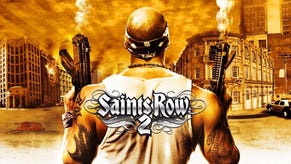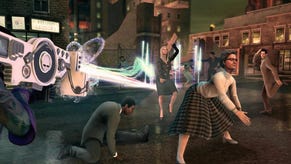Face-Off: Saints Row 4
Virtual insanity.
| Xbox 360 | PlayStation 3 | PC | |
|---|---|---|---|
| Disc Size | 7.0GB | 7.1GB | 8.9GB (download) |
| Install | 7.0GB (optional) | 4197MB (mandatory) | 8.9GB (mandatory) |
| Surround Support | Dolby Digital | Dolby Digital, DTS, 5.1LPCM | Set-up Dependant |
With Saints Row: The Third, there was a sense that Volition's franchise was leaving its GTA-inspired roots behind in order to carve its own path in the world of free-roaming sandbox games, using its irreverent tone, cartoon violence and outrageous action to set it apart from the crowd. Saints Row 4 continues this trend, taking the refreshingly preposterous gameplay found in its predecessor and pushing it to even higher levels of insanity, with alien invasions, superpowers and over-the-top self-parody once again high in the mix.
??Of course, the increased scale and scope of the new game also puts greater demands on the the engine than in the previous Saints Row games, with post-processing effects, particles, and lighting all used far more often than before for increased dramatic effect. The city of Steelport itself has also transformed into a dark and gloomy alien simulation of its former self - at least in the beginning of the game - with giant transparent shields covering various areas and structures that exhibit a layer of digital noise on the surface, only made noticeable as the camera moves close to them.??
These dramatic changes successfully infuse Saints Row 4 with its own distinct personality, separating it from both other similar open-world titles and its predecessors. That said, the increased use of effects and set-pieces appears to have had a profound impact on how well the game runs on console; performance is poor on both platforms, while on PS3 the rendering set-up has seen some substantial changes from Saints Row: The Third in order to accommodate the larger scope of the action on offer in this sequel.??
A look at our head-to-head video and triple-format 720p comparison gallery suggests that the PS3 game retains its 720p vertical resolution but that the horizontal has been scaled back by 25 per cent, giving a 960x720 framebuffer. This results in some additional harshness around geometry edges and effects, along with a degree of fuzziness to the overall image that we usually see on sub-HD titles. Compared to Saints Row: The Third the difference between platforms is now more readily apparent.??
"Visually, this is a win for Xbox 360 owing to higher rendering resolution, better filtering and anti-aliasing plus improved delivery of assets during LOD streaming."
Alternative comparisons:
Jaggies and other upscaling artifacts are mitigated somewhat by the use of quincunx anti-aliasing (QAA) or something closely approximating it, though this comes at the expense of raw image quality. The quincunx sampling pattern not only smooths over polygon edges, but also blurs over texture details to a degree as well, leading to a soft-focused look that obscures the finer elements of the artwork. While this extra layer of coverage actually works quite well in Saints Row: The Third, here it does more harm than good, exaggerating the blurriness of the final image due to the additional upscaling taking place. [Update: On further reflection, we're now inclined to think that SR4 on PS3 may use a post-process anti-aliasing effect, which would have the same effect in blurring artwork.]??
In comparison, the basic set-up of the Xbox 360 game is far more pleasing to the eye: a native 720p framebuffer is joined by 2x multi-sampling anti-aliasing (MSAA), which delivers a crisper and clearer image that doesn't appear too far behind the graphically superior PC game running at the same resolution; outside of the occasional higher-quality texture, the core artwork is largely identical between these versions. The main difference is that levels of anti-aliasing and texture filtering can be set much higher on the PC in order to obtain a much more polished image when blown up on a large screen.??
Going beyond image quality comparisons, the same over-the-top presentation is replicated across both platforms in full force, with impressive use of animated particles and explosions, dynamic light sources, and various screen filters and post-processing effects, including motion blur and depth of field. Within the opening moments of Saints Row 4, the game has you blasting police cars and alien spaceships to pieces using rocket launchers and other high-power weaponry, and the chaos steadily continues as you progress, with the ability to throw fire and run at super speed leading to more inventive ways of laying waste to the extra-terrestrial scum hellbent in taking over the planet.??

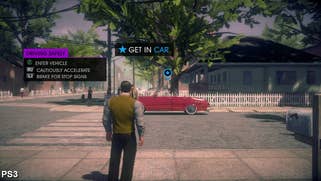
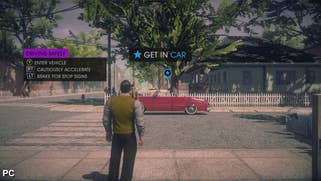

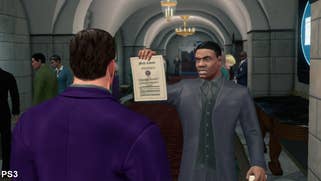
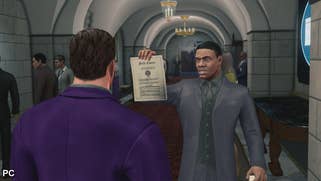

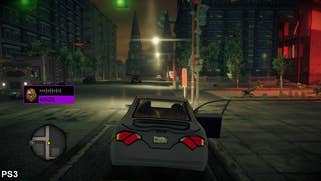
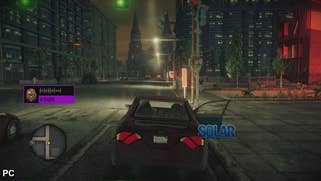
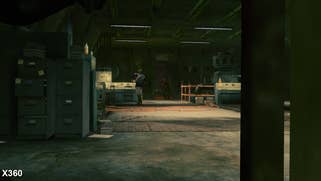
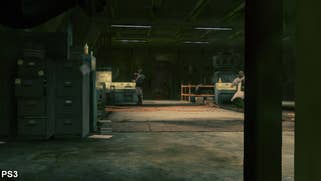
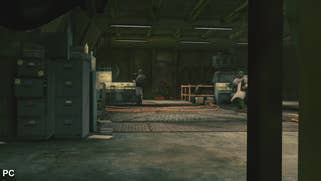

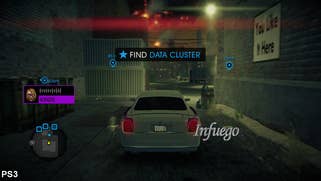
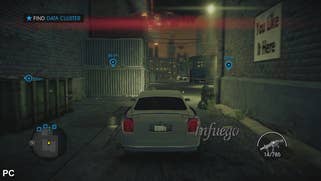
It's an experience that translates well across multiple formats, with the use of some impressively animated particles and layered effects present across all three versions, something which we half-expected to be pared back on consoles or reserved for the PC. That said, alpha buffers are rendered in a lower resolution on the PS3, although artifacts are partially hidden by motion blur and other filters during the really big explosions. Curiously, some effects - such as camera blur - are rendered in fairly low precision across all formats, with the PC version failing to gain any noticeable advantage in this area.??
Elsewhere, the vast majority of differences between platforms are the same as they were in Saints Row: The Third. These consist primarily of lower-resolution shadows and foliage on the PS3, along with reduced levels of anisotropic filtering (AF) and more aggressive level of detail streaming, which sees textures, shadows and other assets delivered more quickly to the screen on the 360. The end result is that the world in Saints Row 4 comes across as a more refined visual experience on Microsoft's system, though not completely without issue: streaming problems are present on both consoles, with some particularly jarring transitions noticeable in some of the cut-scenes and in more detailed parts of the environment during gameplay. There are also some annoying bugs which see the camera clip through characters when they appear close to their surroundings, as well as times where we see enemies disappear into thin air after colliding with cars and other objects.??
To an extent things are more polished on the PC release. While the random bugs remain, overall graphical quality is given a modest boost over the consoles, mostly from increases in anti-aliasing and texture filtering, while an extra layer of sharpness is provided when making the jump to 1080p. The artwork doesn't scale up in tandem with screen resolution though, so gains in raw detail are few and far between, but the improved clarity and crispness of running in 1080p or higher with 8x MSAA and 16x AF certainly deliver worthwhile upgrades over what we have with the consoles.??
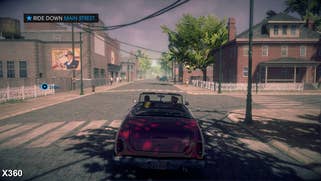




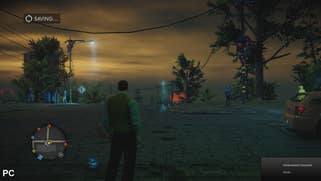
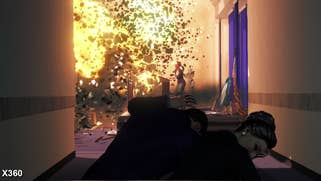
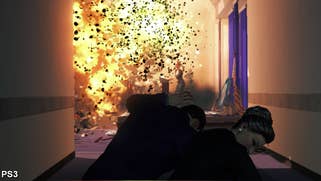
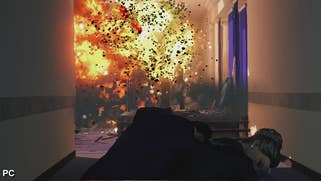



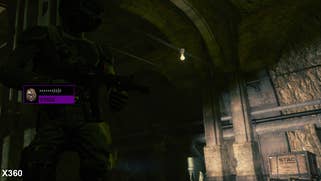
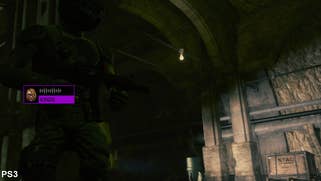

On top of that, the streaming issues found in the console games are practically non-existent, with the game making use of the extra memory available in today's graphics cards over the now paltry amounts available in the 360 and PS3. Most notably, we see that dynamic light sources feature a longer casting distance that allows them to better illuminate the environment from afar. Beyond this, shadows are rendered in a slightly higher resolution, and this is joined by a stronger screen-space ambient occlusion (SSAO) implementation, which applies extra shade to various nooks and crannies in parts of the environment.??
Ultimately, the biggest gain comes from being able to run the game at 60fps, which is a world away from the variable, sub-30fps experience we see on the 360 and PS3. It's here where the extra temporal resolution makes a difference - especially when running at 1080p. Our i5 and GTX 680 managed to deliver what we like to call a perceptual 60fps when running the game with all settings maxed out, where most dips in smoothness were subtle enough not impact upon the general ebb and flow of the gameplay to any noticeable degree. However, it's disappointing to find that the high frame-rates on offer weren't joined by similar increases in controller response. While clearly delivering faster response and more precise aiming using the analogue sticks than the console versions, things didn't feel as sharp and as effortless as we would expect from the gold standard in refresh rate.??
Saints Row 4: performance analysis??
In terms of console performance, it's fair to say that highly responsive controls are not part of the package. Saints Row 4 strives to hit the current-gen 30fps standard, but it is not a target that the game reaches with any degree of consistency on either platform. The opening section of the game starts off well, with reasonably smooth frame-rates and only a small amount of visible screen-tear outside of explosions and scripted set-pieces, where differences between frames are much more easily spotted.
Volition has opted for an uncapped frame-rate in Saints Row 4 on both platforms during gameplay, with v-sync dropped entirely. This means that in less demanding scenes we see top-end update reach well beyond 40fps, with fluid gameplay and a decent degree of controller response.
"Performance is the real problem faced by both console versions. Frame-rate is unlocked, resulting in ever-present screen-tear and highly variable response."
However, it also means that torn frames are delivered to the screen back-to-back en mass, resulting in near-constant tearing as the engine attempts to keep frame-rates as high as possible, but at a clear cost to image consistency. At least, as our performance video illustrates, the effects of this aren't always as obvious as the graphs suggest - outside of brighter sections of the game and times where dramatic shifts in camera movement occur, a lot of the torn frames manifest as on-screen judder, or even pass by largely unnoticed. Of course, since torn frames are almost continuously being output to the screen, consistency varies massively throughout.
There's a distinct sense that the uncapped frame-rate and near-continuous tearing does little to keep things running smoothly with any degree of consistency on either format. Changes in the number of cars, enemies, foliage and effects on-screen quickly cause frame-rates to take a noticeable dive on both platforms.
Under load, the 360 manages to eke out a tiny advantage, with the system's faster memory bandwidth and pixel fill-rate allowing it to better handle alpha-heavy scenes, although the PS3 game is never that far behind. In fact, in many situations the two appear to be compromised to the same degree, although the PS3 renders fewer pixels on-screen in order to keep up. Remarkably, despite the variable frame-rate and large drops in fluidity, Saints Row remains very playable on both consoles, even if the impact of these performance issues is felt with a noticeable reduction in how well the controls respond.??
"V-sync is only enabled for cut-scenes where controller response is not an issue and the result is a consistently low update."
In cut-scenes, where control response is not an issue, Volition opts for a different strategy. V-sync is engaged on both platforms (with just a few tears creeping in on Xbox 360, where the screen buffers are flipped a little too late). The lack of screen-tear means that these sequences exhibit less of the subtle judder than in gameplay, although drops in frame-rate are more noticeable. Here, a locked 20fps is commonplace on both consoles, although we do see situations where the 360 game sticks to 30fps in less demanding scenes.
When making the switch to scenes that segue into gameplay, the engine reverts back to an uncapped frame-rate and without v-sync enabled, thus resulting in smoother highs, but at the expense of more visible drops in fluidity under load. Curiously, in many of these scenes it is the PS3 that commands the advantage in smoothness, but without any additional increase in torn frames - both versions are continuously tearing here, so it can't really get any worse in this regard.
Similar to its predecessor, there is an option available to toggle v-sync on and off for both cut-scenes and gameplay in the 360 version of Saints Row 4, allowing those sensitive to screen-tear to choose a solidly v-synced presentation instead - not that we would recommend it. Given that performance is already compromised with an unlocked frame-rate, introducing v-sync severely impacts on response and raw frame-rate, much like the same options did in the 360 version of Saints Row: The Third. In that sense it's telling that this option is nowhere to be found in the PS3 edition of the new game, where its inclusion would result in an even more compromised gameplay experience.
"Just like its predecessor, v-sync can be enabled from the settings menu on the Xbox 360 version, but based on the resultant very low performance, we can't recommend it."
Saints Row 4: the Digital Foundry verdict??
Kudos to Volition in attempting something different and even more off the wall with Saints Row 4, rather than simply releasing a game based around the same tried-and-tested GTA open-world blueprint. Of course Saints Row 4's outrageous tone and ridiculous premise might not appeal to everyone - and it's certainly not award-winning material - but in terms of offering up an amusing, fun and downright surreal sandbox experience, there's nothing else quite like it.??
It's rather unfortunate that the game is compromised by its technical failings on the consoles, in which some poor performance issues negatively impact the gameplay experience, with latency-heavy controls clearly compromising the fun whenever the engine is under load. In terms of overall consistency and performance, there's not much in it between the 360 and PS3 versions, though it's the Xbox 360 game that's the one to have if you're in the position of choosing between the two platforms owing to its resolution, image quality and streaming advantages. The action is a little smoother and the sharper image is definitely preferable this time around compared with the situation in Saints Row: The Third, where the softer nature of the PS3 release is joined with comparable performance to the 360, but without the screen tear.??
That said, the console versions of Saints Row 4 fall well short compared to the PC game, where the opportunity for smoother and more stable frame-rates dramatically transforms the core gameplay experience, making it far more enjoyable as a result. The graphical upgrades in other areas might not be a colossal leap forward over the 360 game, but the combination of more refined visuals and better performance make it the preferred choice. The same holds true when running the game on reasonably low-spec machines, in which the ability to run at a solid 30fps in 720p or 1080p provides a similarly welcome upgrade over the console releases, even without achieving the aspirational 60fps experience that represents the minimal requirement for enthusiast PC gaming. PC should be first choice then, as you would expect at this late stage in the console cycle.






